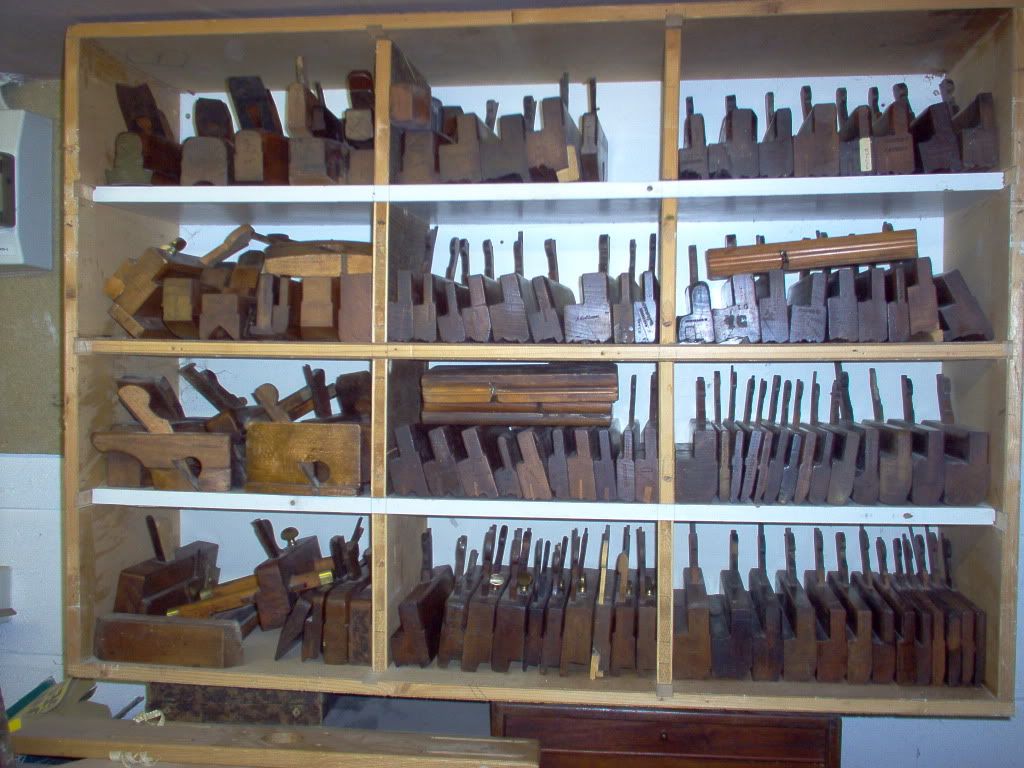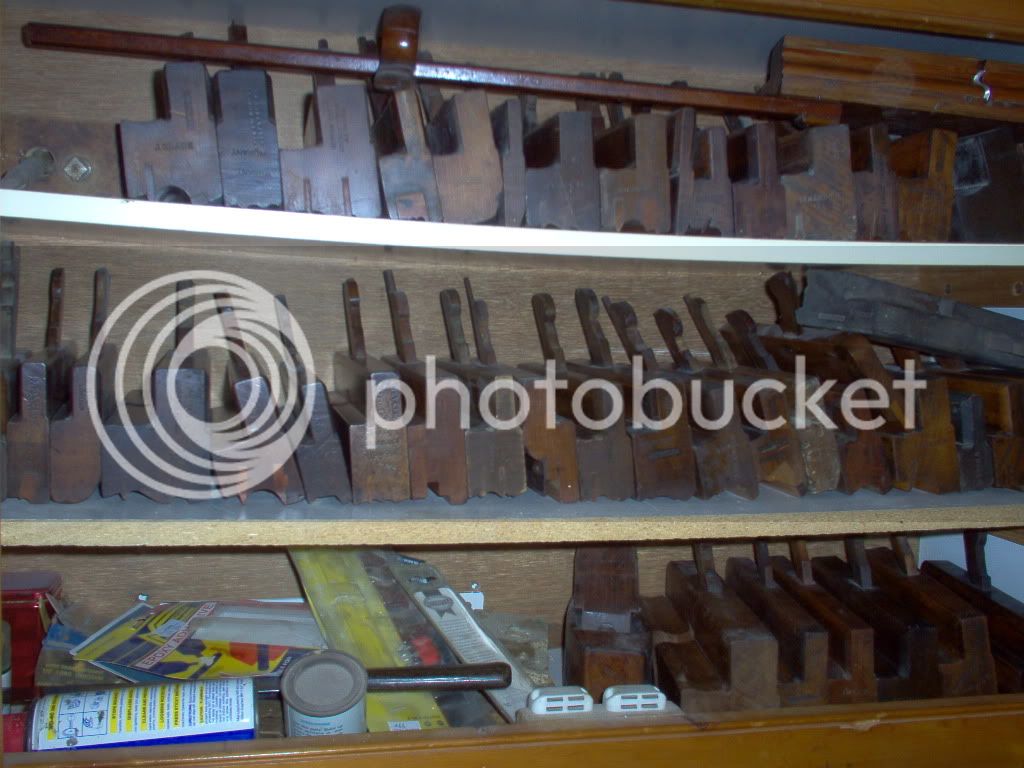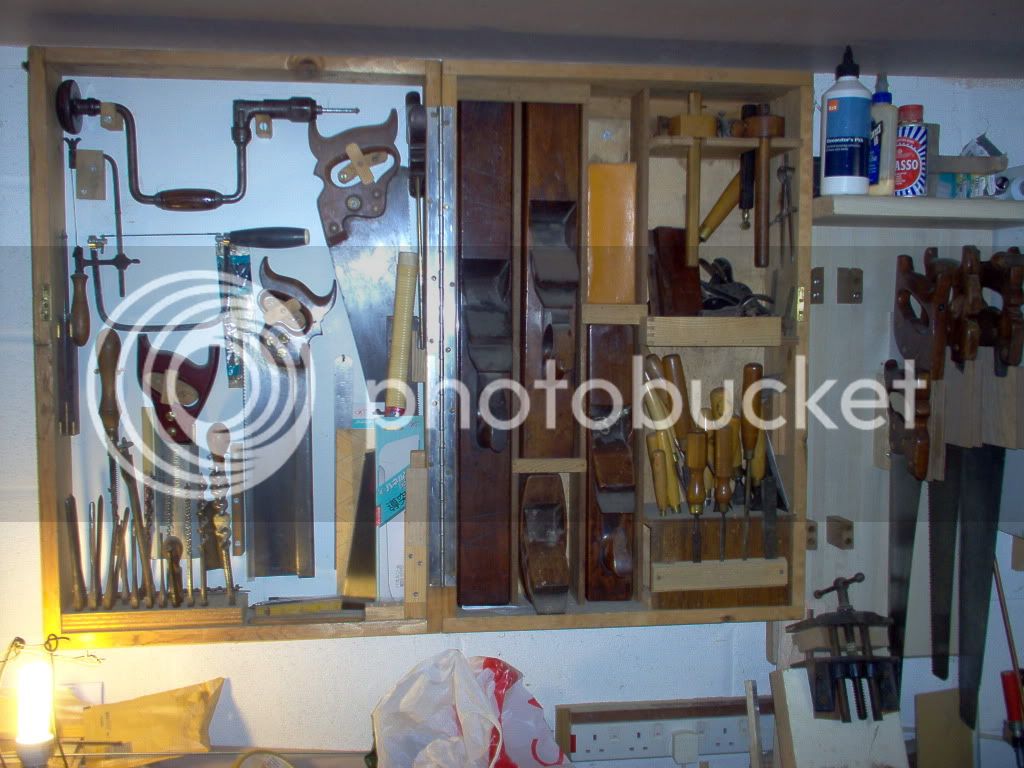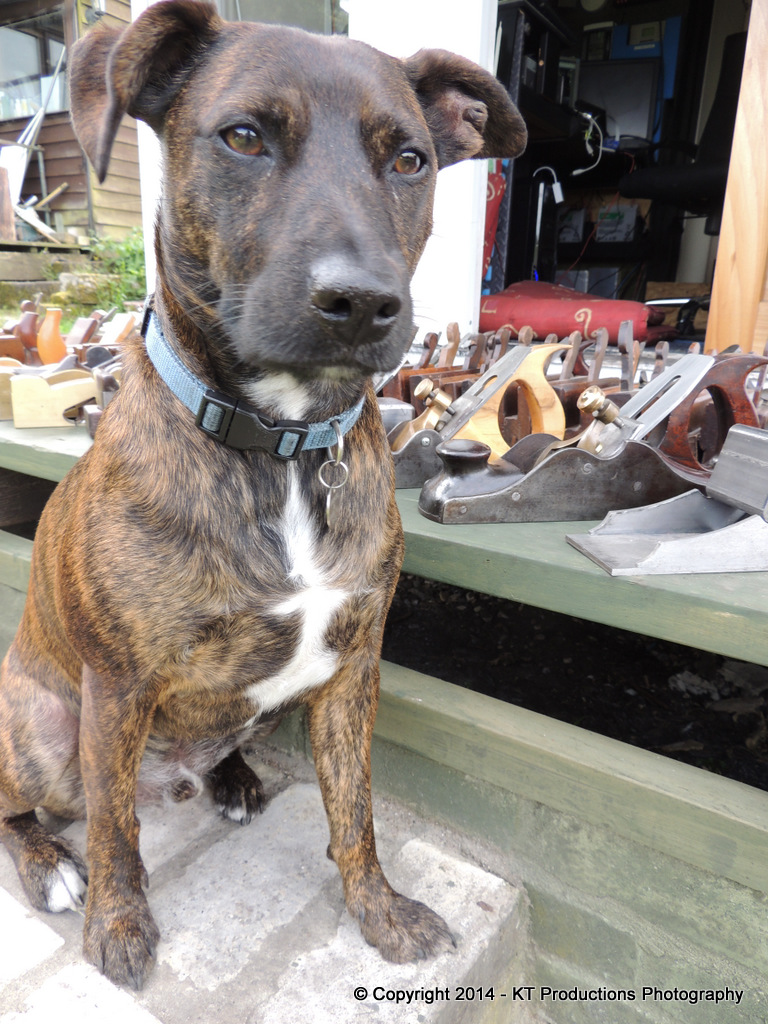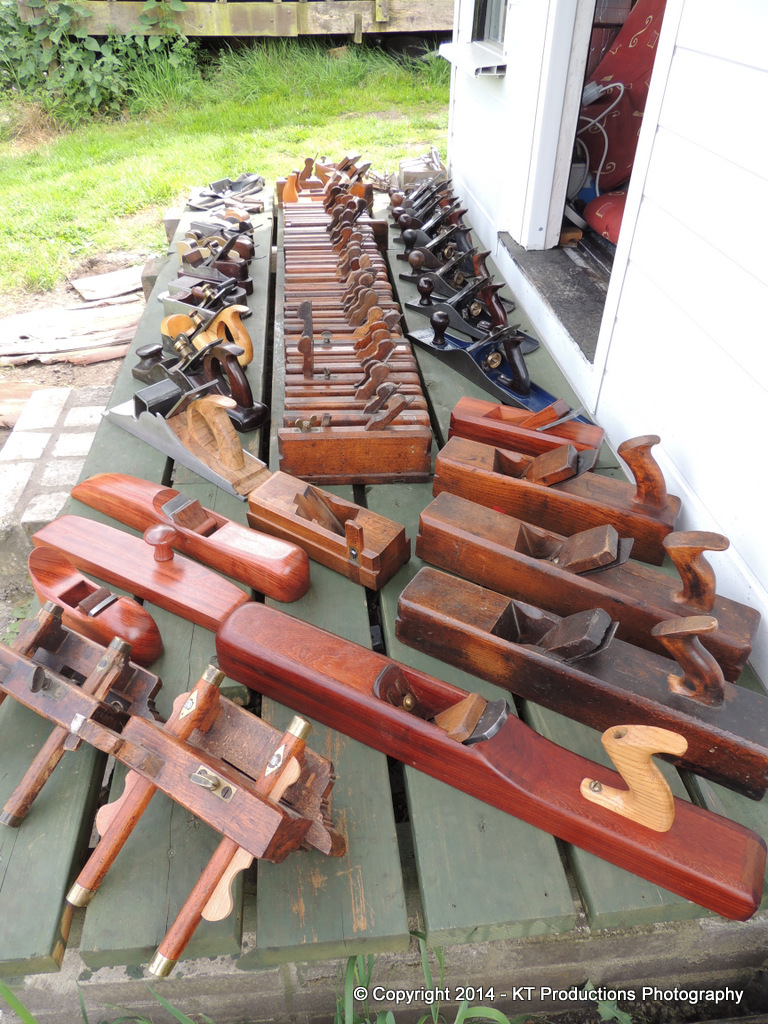I was looking around online for some details about wooden planes and came across this site.
http://www.hyperkitten.com/tools/articl ... Basics.php
From it, the following is discussed by the author:
"People often ask me to recommend a good starter set of planes. I answer them by thinking of the molding planes I use the most and trying to figure out which planes I would miss the most if they disappeared. I should mention that most of my work is small to medium size case pieces, boxes, etc. Thus, the plane sizes I recommend are scaled for that size work. If you primarily work on larger or smaller pieces you might want to look for different sizes. If I had to narrow down my working set to just a few planes and prioritize them in order of preference, I would choose the following:
Moving Fillister
Skew Rabbet Planes- 2in and smaller around 3/4in.
Side Beads: 1/8in., 3/16in., 1/4in.
Dado Planes: 3/8in., 1/2in., 5/8in.
Tongue and Groove pair- 3/4in.
Hollow and Rounds- sizes near 6,8,10,12
I think that is a good starter set of molding planes. Of course, you don't need to acquire them all at once- get one or two planes and try them out. Get a feel for sharpening them, using them- setting the wedge, etc. Then add more as your projects demand. There's no need to run out and get a full set of H&Rs or every size dado right away. I like to acquire tools as I need them, taking the time to tune up each new plane on its own rather than acquire everything I may ever need all at once. Once you get your first experience with a properly tuned molding plane- and whiff of that distinct smell 100year old beech makes when it heats up in use, you'll be hooked."
So for small to medium sized pieces what do people think to that list?
http://www.hyperkitten.com/tools/articl ... Basics.php
From it, the following is discussed by the author:
"People often ask me to recommend a good starter set of planes. I answer them by thinking of the molding planes I use the most and trying to figure out which planes I would miss the most if they disappeared. I should mention that most of my work is small to medium size case pieces, boxes, etc. Thus, the plane sizes I recommend are scaled for that size work. If you primarily work on larger or smaller pieces you might want to look for different sizes. If I had to narrow down my working set to just a few planes and prioritize them in order of preference, I would choose the following:
Moving Fillister
Skew Rabbet Planes- 2in and smaller around 3/4in.
Side Beads: 1/8in., 3/16in., 1/4in.
Dado Planes: 3/8in., 1/2in., 5/8in.
Tongue and Groove pair- 3/4in.
Hollow and Rounds- sizes near 6,8,10,12
I think that is a good starter set of molding planes. Of course, you don't need to acquire them all at once- get one or two planes and try them out. Get a feel for sharpening them, using them- setting the wedge, etc. Then add more as your projects demand. There's no need to run out and get a full set of H&Rs or every size dado right away. I like to acquire tools as I need them, taking the time to tune up each new plane on its own rather than acquire everything I may ever need all at once. Once you get your first experience with a properly tuned molding plane- and whiff of that distinct smell 100year old beech makes when it heats up in use, you'll be hooked."
So for small to medium sized pieces what do people think to that list?

































